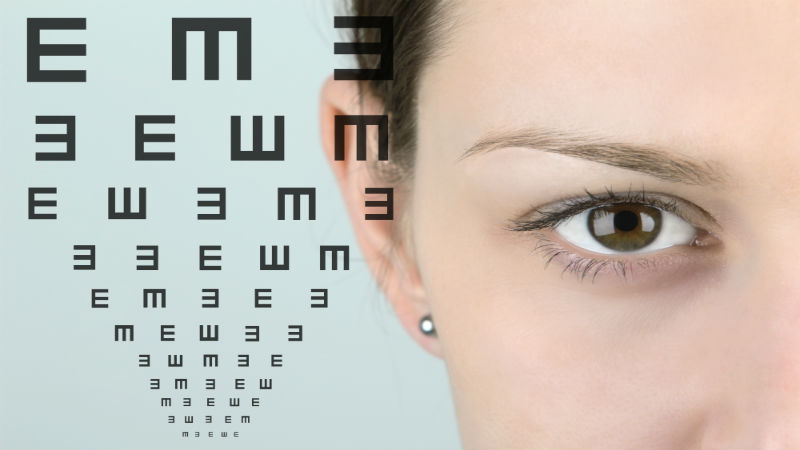Eyeglass and contact lens prescriptions are not the same. Although both are prescriptions to correct your vision, you cannot use them interchangeably. Contact lens are positioned directly on your eyeball, whereas your glasses are approximately 12 millimeters away from your eyes. The difference in distance means a different strength in your prescription, so you will require a separate contact lens exam.
If you want to wear both contacts and glasses, you will need separate prescriptions.
The initial eye exam is comprehensive. Your doctor will check the vision in both eyes to determine your prescription and overall eye health. From there, you and the doctor will look at your lifestyle to decide if glasses or contact lenses are best.

What does a comprehensive eye exam entail?
The comprehensive exam will be the same whether you’re looking to get a new pair of eyeglasses or invest in contact lenses. It will begin with the doctor asking about and reviewing your medical and vision history.
Then several simple eye tests will be performed. These tests include the eye movement test, the cover test, and a pupil reaction test. You will also be asked to perform a visual acuity test where you will read letters on a chart. Once these tests are complete and the doctor has confirmed that a prescription is needed, refraction testing will take place. This test is where the doctor flips a machine known as phoropter back and forth between lenses while you look at a series of letters to determine which one is clearer. Depending on your medical and vision history, your doctor may perform additional testing.
Are additional tests needed for contact lens exam?
If you decide that wearing contact lenses would be best for you, the doctor will measure the size of your eyes and your pupils.
Your doctor will help you determine which type of lens are best for your lifestyle, such as overnight or disposable lenses, and soft lenses or hard lenses. Based on what you decide, the doctor will have you try on a pair and make sure you are comfortable getting the contact in and out and that it feels comfortable on your eye.

Can I use my eyeglass prescription for contact lenses?
If you’ve already had an eye exam and bought glasses but would like to switch to contact lenses, you will have to take another exam and have a contact lens fitting. A contact lens prescription requires additional information not provided by the standard prescription exam, such as the base curve (the curvature of the lens), diameter (the width of the lens), lens brand or material, and expiration date. You are required to have a contact lens eye exam annually in order to purchase additional lenses.
What are my prescription rights?
Whether you choose to get a pair of eyeglasses or decide contact lenses will be a better fit for your lifestyle, your doctor is required to offer you the prescription at the end of your eye exam, or if getting contact lenses, when the fitting is complete.
This prescription will allow you to purchase contacts or eyeglasses anywhere as long as you provide the information. You are not required to purchase from the prescribing doctor and are free to shop around at other stores or online, but most doctors establish a good doctor-patient relationship and are always available to replace a lens or fill an emergency prescription, so patients typically purchase their glasses and contact lenses from the office that administered the exam.
Can anyone get a contact lens prescription?
Not everyone is a suitable candidate for contact lenses. Pre-existing eye conditions like blepharitis (inflammation of the eyelids) or dry eyes may make wearing contacts uncomfortable. Your eye doctor can let you know if you can wear contacts successfully.